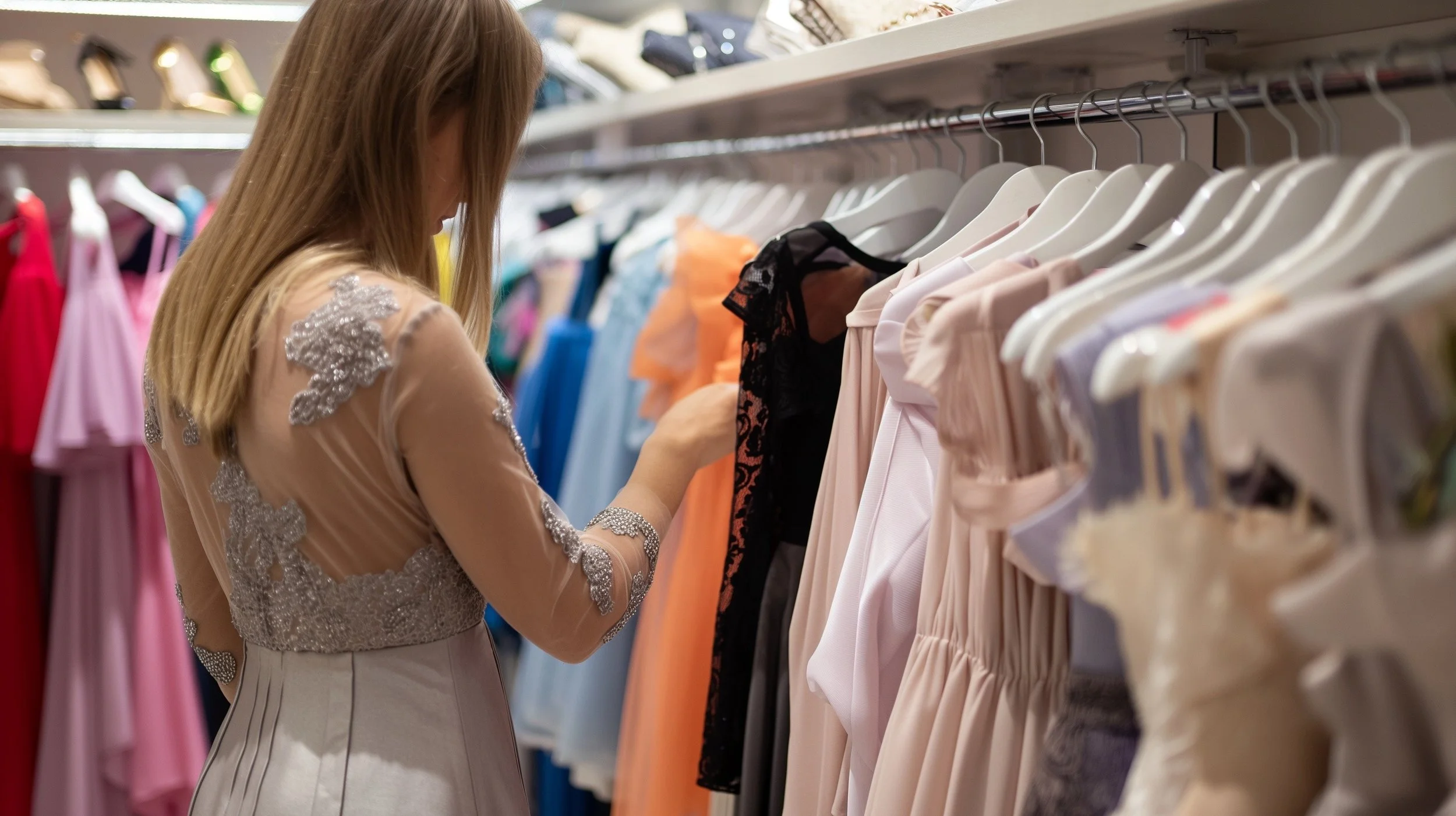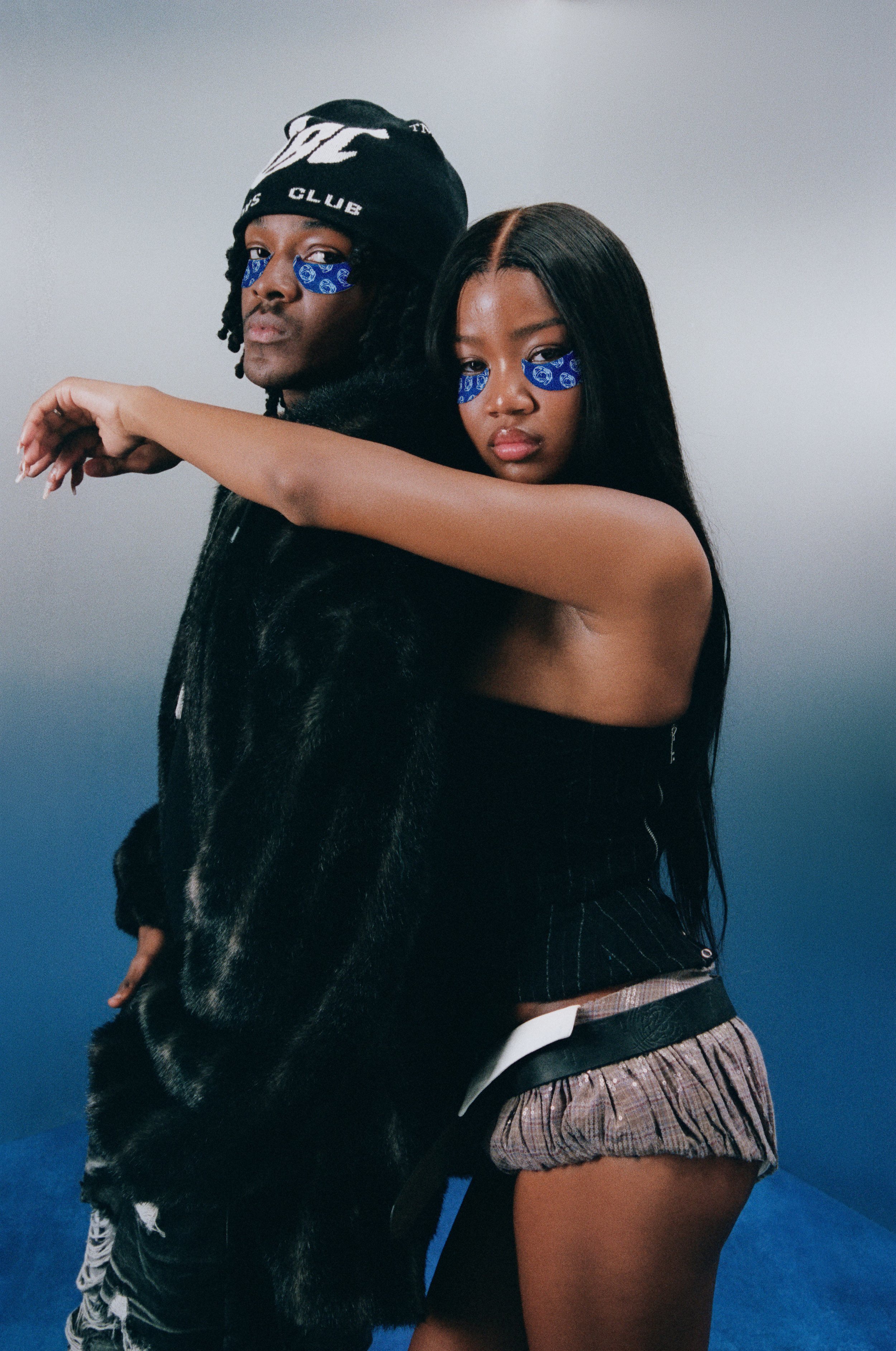Sequins, Satin, and Velvet: Picking the Right Fabric for Prom
By PAGE Editor
Selecting the right fabric for a prom dress shapes the experience, style, and statement you want to make. The fabric doesn’t just contribute to the dress's look; it defines how it feels, moves, and captures light.
Choosing the right fabric involves knowing how each one behaves under different conditions, understanding its unique qualities, and knowing how it complements the dress's silhouette and your personal style.
Here, we’ll guide you through the details of popular prom fabrics like sequins, satin, velvet, and more, helping you choose the one that will elevate your look on the big night.
Understanding Fabric Basics
Before diving into specific types of fabrics, it’s essential to understand what makes a fabric suitable for designer dresses created for prom. Factors like breathability, weight, drape, and sheen influence how the fabric will feel, look, and perform throughout the night. Breathability ensures comfort, weight affects movement, drape influences how the fabric falls, and sheen adds that extra sparkle for photos.
Sequins: Glamour and Sparkle
Sequined dresses bring immediate glamor, making them a popular choice for anyone aiming to shine. Sequins are small, reflective discs sewn onto fabric to create a shimmering effect. When choosing sequined fabric, consider the density and size of the sequins. Denser sequins mean more sparkle but can add weight to the dress, affecting its flow and comfort.
Types of Sequin Fabric
1. All-Over Sequin Fabric: Offers maximum sparkle but may be heavier, suitable for more structured silhouettes.
2. Scattered Sequin Fabric: Provides a more subtle shimmer, ideal for softer silhouettes.
3. Patterned Sequin Fabric: Uses sequins in specific designs, offering a unique look that can accentuate certain parts of the dress.
Pros and Cons
Sequins reflect light beautifully, but they can also be heavy and slightly scratchy against the skin. They work well for fitted styles like mermaid dresses or structured A-line gowns but may not be ideal for looser, flowing designs.
Satin: Classic Elegance and Sophistication
Satin is a smooth, lustrous fabric known for its elegant drape and subtle shine. Often associated with classic styles, satin offers a timeless look that suits various prom dress silhouettes. Satin can range from lightweight to heavy, which influences how it moves and feels on the body.
Types of Satin
1. Crepe-Back Satin: Features a smooth, shiny side and a textured back, offering versatility in design.
2. Stretch Satin: Blends satin with spandex for a more comfortable, fitted look.
3. Duchess Satin: Heavier with a rich sheen, it’s ideal for ball gowns and structured dresses.
Pros and Cons
Satin’s smooth texture feels luxurious and is generally comfortable against the skin. However, it can show creases easily, so keep that in mind for a long evening. Satin suits styles like ball gowns, sheaths, and A-lines, but avoid it in overly detailed designs where creasing could be an issue.
Velvet: Richness and Depth
Velvet, with its soft, dense texture, offers a unique depth and luxurious feel. This fabric creates an understated elegance, especially if you’re looking to stand out subtly with a unique dress for your prom dance. Velvet’s plush quality gives a refined look and is an excellent option for cooler seasons due to its warmth.
Types of Velvet
1. Crushed Velvet: Has a wrinkled look with a higher sheen, making it both unique and glamorous.
2. Stretch Velvet: Contains spandex, allowing for more fitted designs and movement.
3. Silk Velvet: Offers the highest quality, with an exceptionally soft feel and natural sheen.
Pros and Cons
Velvet brings a cozy and luxurious feel, but it can be heavier and less breathable than other fabrics. It’s perfect for fitted styles, long sleeves, and structured silhouettes but might feel too warm in a crowded setting or warmer season.
Chiffon: Light and Flowing
Chiffon is an airy, semi-transparent fabric often used for layers or overlays. Its lightweight nature allows it to flow gracefully with every step, making it perfect for soft, romantic styles. Chiffon works well in a variety of colors, adding dimension and movement to any dress.
Types of Chiffon
1. Silk Chiffon: Offers a luxurious, smooth feel and delicate drape.
2. Polyester Chiffon: More affordable and durable, though slightly less breathable.
3. Crinkle Chiffon: Has a textured finish, providing a casual, bohemian look.
Pros and Cons
Chiffon’s lightness makes it ideal for flowy gowns and layered designs. However, its delicate nature requires careful handling. It’s best for A-lines, empire waist dresses, and layered styles but may not work well for fitted or structured silhouettes.
Tulle: Volume and Fairytale Charm
Tulle is a lightweight, sheer fabric known for its airy, ethereal quality. Often used to add volume, it’s a staple in ball gowns and dresses with a fairytale look. Tulle can be layered to create fullness or used sparingly for delicate details.
Types of Tulle
1. Soft Tulle: More flexible and ideal for flowing styles.
2. Stiff Tulle: Adds structure, perfect for fuller skirts.
3. Embroidered Tulle: Features detailed designs, adding texture and uniqueness.
Pros and Cons
Tulle creates volume without adding weight, making it ideal for ball gowns and princess-style dresses. However, it can be prone to snagging, so handle it carefully. It’s excellent for skirts with volume, overlays, and detailing but may not be comfortable in tight, fitted areas.
Lace: Delicate and Romantic
Lace brings intricate beauty and sophistication, often chosen for its romantic appeal. It’s a versatile fabric that works well in overlays, sleeves, and full gowns. Lace is available in numerous patterns, each creating a distinct effect, from floral to geometric.
Types of Lace
1. Chantilly Lace: Known for its fine detail and lightweight nature, ideal for delicate looks.
2. Guipure Lace: A thicker lace with bold patterns, suitable for adding texture.
3. Alençon Lace: Features a corded edge, adding a defined, elegant touch.
Pros and Cons
Lace is delicate and elegant, though it may need a lining for comfort. It’s perfect for sheath, mermaid, and fitted styles and complements both modern and classic looks. However, avoid lace if you prefer a minimalist or smooth finish.
Organza: Structure with Airiness
Organza is a thin, stiff fabric that provides volume with a lightweight feel. Known for its crisp texture, organza is often layered in skirts or used in structured details. It’s slightly sheer and offers a unique shine, making it an eye-catching choice.
Types of Organza
1. Silk Organza: Lightweight and breathable with a natural sheen.
2. Polyester Organza: Durable and affordable, often used in layered designs.
3. Crystal Organza: Known for its high sheen, perfect for adding sparkle.
Pros and Cons
Organza’s lightness and structure make it excellent for adding volume, but it can feel scratchy against the skin. It’s ideal for skirts, overlays, and structured designs but might not work well for fitted styles where softness is needed.
Selecting the Perfect Fabric for Your Style and Comfort
Choosing the right prom dress fabric means balancing style, comfort, and practicality. Consider factors like movement, weight, and breathability. For structured dresses with bold shapes, heavier fabrics like satin or velvet work well. For flowing, delicate styles, chiffon or tulle might be more suitable. Fabrics like lace and sequins add texture and shine but consider where they’ll be most comfortable on the dress.
Ready to Shine on Prom Night
Prom fabric choices create a unique look and feel for your big night. Whether you lean toward the glamor of sequins, the elegance of satin, or the romance of lace, each fabric offers something distinct. Remember that comfort matters as much as style. With this guide, you can find a fabric that not only suits your style but lets you enjoy every moment with confidence.
HOW DO YOU FEEL ABOUT FASHION?
COMMENT OR TAKE OUR PAGE READER SURVEY
Featured









Miami Art Week 2025 Powered by Art Hearts Fashion closed out the year with a high-impact, citywide series of runway shows, designer debuts, and star-studded events across Miami’s most iconic venues, celebrating global creativity, inclusivity, and the intersection of fashion, art, and culture.